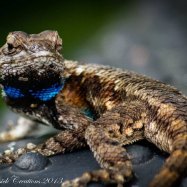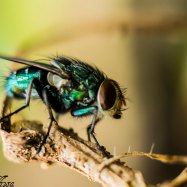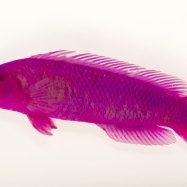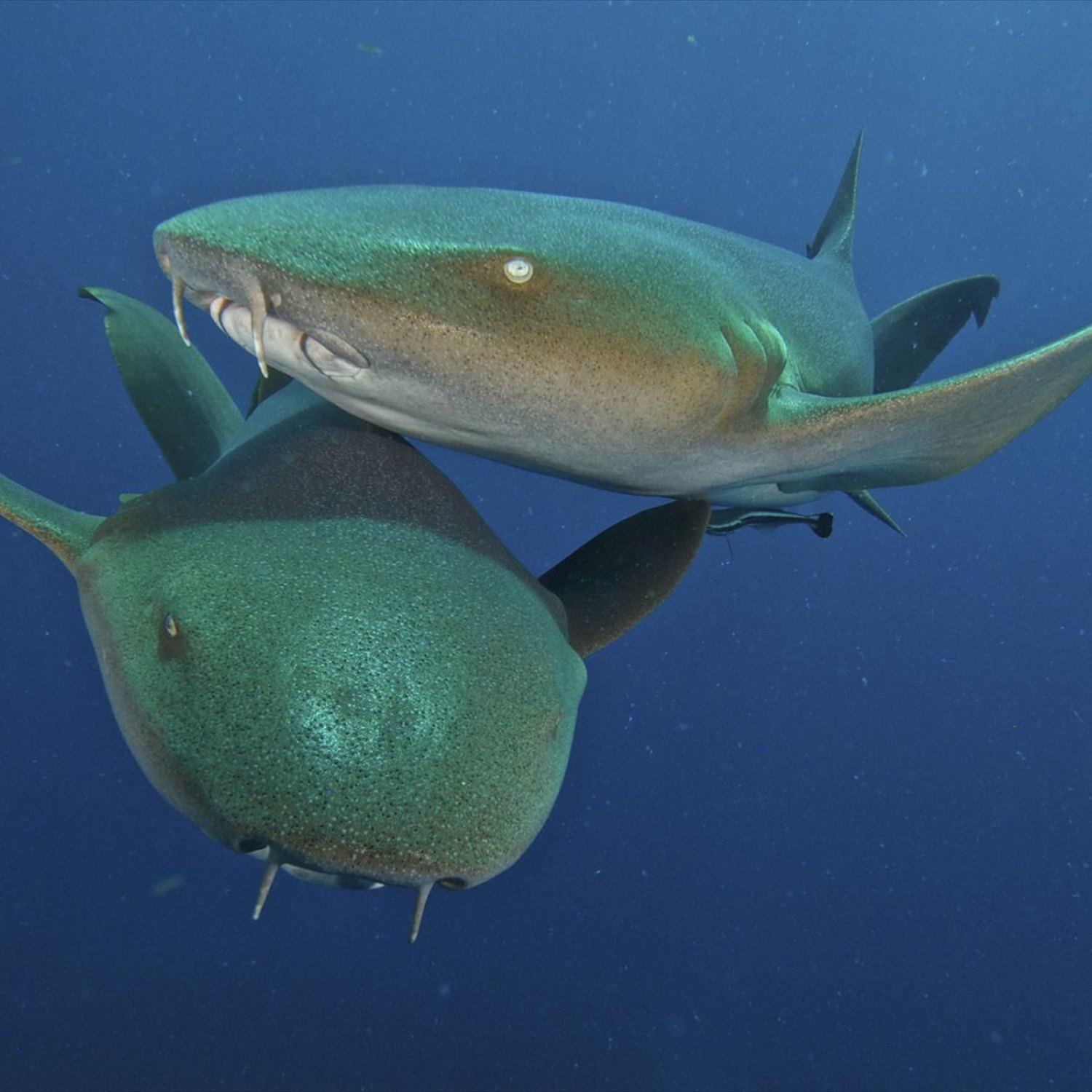
Nurse Shark
Up to 14 feet
The Nurse Shark, found in the Florida Keys, is a species of shark with a length of up to 14 feet. Belonging to the Ginglymostomatidae family, this animal has an elongated, cylindrical body shape. Despite its name, this shark is actually a gentle giant, and plays an important role in maintaining a healthy ocean ecosystem. #NurseShark #FloridaKeys #Sharks #OceanLife
Animal Details Summary:
Common Name: Nurse Shark
Kingdom: Animalia
Habitat: Tropical and subtropical coastal waters
The Fascinating Nurse Shark: A Gentle Giant of the Ocean
The ocean is a vast and mysterious environment, home to countless creatures both big and small. And one of the most fascinating creatures that reside in the ocean is the nurse shark. These large, docile creatures have long captivated the imagination of humans, and for good reason. With their unique appearance, gentle behavior, and important role in the ecosystem, the nurse shark is a truly remarkable animal Nurse Shark.Scientifically known as Ginglymostoma cirratum, the nurse shark belongs to the Animalia kingdom and Chordata phylum. It is classified as a Chondrichthyes or a cartilaginous fish, which means that its skeleton is made up of cartilage rather than bones. It is also a member of the Orectolobiformes order and Ginglymostomatidae family, making it closely related to other shark species such as whale sharks and wobbegongs.
Commonly found in the tropical and subtropical coastal waters of the Atlantic and eastern Pacific Oceans, the nurse shark is known for its distinctive appearance and behavior. It can be identified by its dark brown or grayish-brown coloration, elongated and cylindrical body shape, and up to 14 feet in length. But what truly sets this shark apart from other species is its unique feeding method and its intrinsic value to the marine ecosystem.
As a carnivorous creature, the nurse shark feeds primarily on crustaceans, mollusks, and other small fish. But what is truly fascinating about their feeding method is their ability to suction their prey into their mouth using their powerful jaws. This is why they are often referred to as the "nurse shark" as their suction technique resembles that of a nurse drawing milk from a bottle Nose Horned Viper. This gentle approach to feeding makes them a non-threatening presence in their habitat and has earned them the reputation of being peaceful creatures.
The geographical distribution of the nurse shark is mainly focused in the Atlantic and eastern Pacific Oceans, with some subpopulations found in other parts of the world. However, the country of origin for the nurse shark is the United States, specifically in the warm waters of the Florida Keys. This makes the United States one of the best places to observe and learn about this magnificent creature.
The Florida Keys, a chain of islands located at the southernmost tip of Florida, is home to a variety of different marine life, including the nurse shark. With its clear blue waters, diverse marine ecosystem, and protected marine reserves, the Florida Keys is a paradise for snorkelers and scuba divers looking to catch a glimpse of the nurse shark in its natural habitat.
Apart from their physical characteristics and unique feeding method, the nurse shark also plays a vital role in the marine ecosystem. As bottom-dwelling creatures, they help keep the ecosystem in balance by feeding on small fish and invertebrates, preventing them from overpopulating and disrupting the delicate balance of the ocean. In addition, they are also considered as "cleaner fish" in their habitat, as they feed on dead or dying organisms, preventing the spread of disease and decay.
However, despite their important role in the ecosystem, the nurse shark is currently facing some threats that could potentially harm their population. One of the biggest threats to their existence is overfishing. As a slow-growing species with a low reproductive rate, the nurse shark is particularly vulnerable to overfishing, making them susceptible to decline in population. This is why conservation efforts are crucial in protecting and preserving the nurse shark and its habitat.
The Florida Keys National Marine Sanctuary, along with various conservation organizations, is working tirelessly to protect the nurse shark and its habitat. Through education, research, and various conservation measures, they hope to ensure the survival of this gentle giant of the ocean for generations to come.
In conclusion, the nurse shark may not be the most well-known or feared shark species, but it is undoubtedly one of the most fascinating and important creatures in the ocean. From its unique appearance and gentle behavior to its important role in the marine ecosystem, the nurse shark is truly a remarkable animal that deserves our admiration and protection. So the next time you find yourself swimming in the warm waters of Florida, keep your eyes peeled for this elusive creature as you never know when you might cross paths with the gentle giant of the ocean.

Nurse Shark
Animal Details Nurse Shark - Scientific Name: Ginglymostoma cirratum
- Category: Animals N
- Scientific Name: Ginglymostoma cirratum
- Common Name: Nurse Shark
- Kingdom: Animalia
- Phylum: Chordata
- Class: Chondrichthyes
- Order: Orectolobiformes
- Family: Ginglymostomatidae
- Habitat: Tropical and subtropical coastal waters
- Feeding Method: Carnivorous
- Geographical Distribution: Atlantic and eastern Pacific Oceans
- Country of Origin: United States
- Location: Florida Keys
- Animal Coloration: Dark brown or grayish-brown
- Body Shape: Elongated and cylindrical
- Length: Up to 14 feet
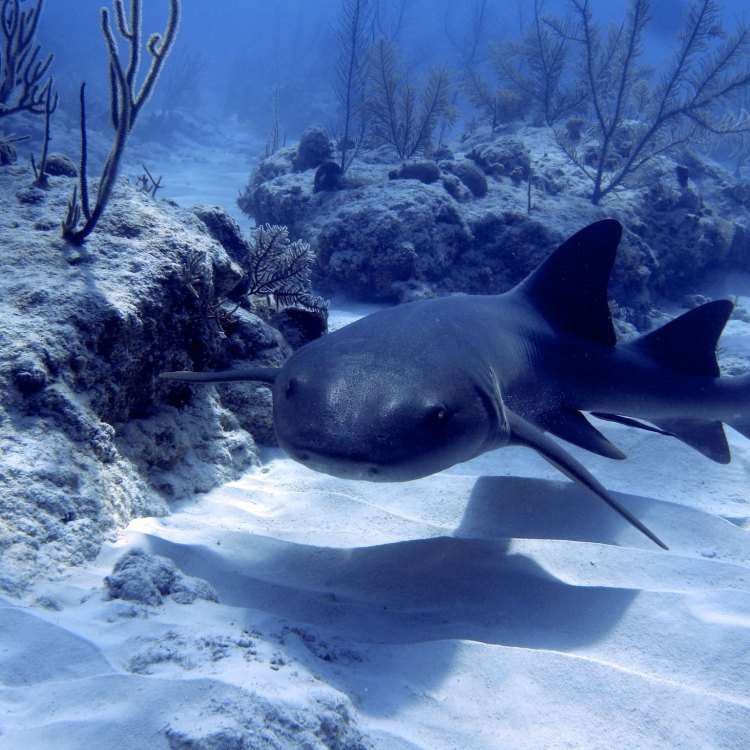
Nurse Shark
- Adult Size: 8 to 10 feet
- Average Lifespan: 25 to 30 years
- Reproduction: Oviparous
- Reproductive Behavior: Mating occurs during the night
- Sound or Call: Nurse sharks can produce a low humming sound.
- Migration Pattern: Resident species, with some seasonal migration
- Social Groups: Solitary or in small groups
- Behavior: Nocturnal and sedentary
- Threats: Overfishing and habitat destruction
- Conservation Status: Vulnerable
- Impact on Ecosystem: Maintains balance in coral reef ecosystems
- Human Use: Fishing and ecotourism
- Distinctive Features: Barbel-like sensory organs on the lower jaw
- Interesting Facts: Nurse sharks can spend long periods resting motionless on the sea floor.
- Predator: Larger sharks, such as tiger sharks and hammerhead sharks
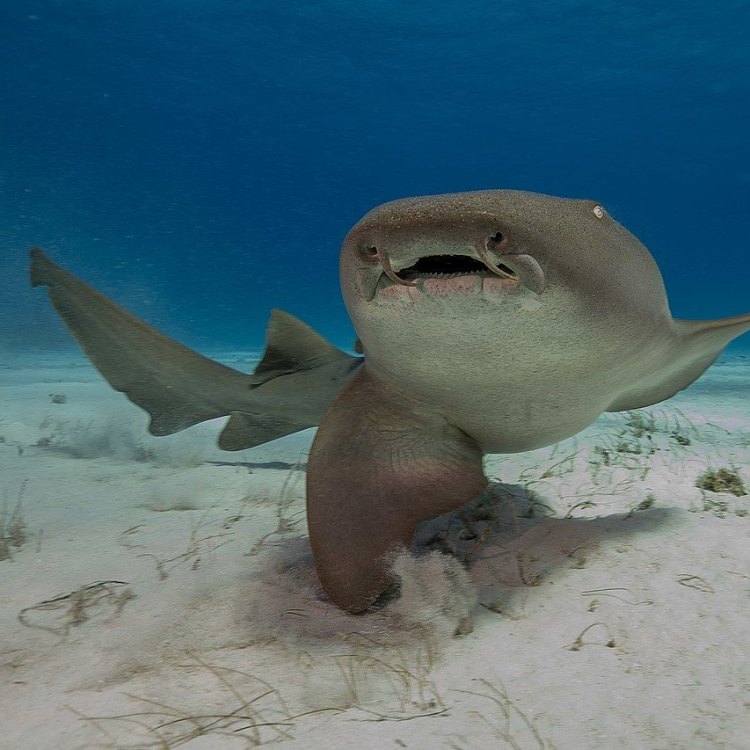
Ginglymostoma cirratum
The Mysteries of the Nurse Shark: Cunning, Mysterious, and Vital to Ocean Ecosystems
In the vast expanse of the ocean, there is one species that stands out as both mysterious and captivating – the nurse shark. With its unique features and behavior, this species has captured the fascination of many, from marine biologists to divers to casual observers. However, despite being a well-known species, there are still many aspects of the nurse shark that remain a mystery.So, let's dive deeper into the secrets of the nurse shark, and learn why it is such a crucial and fascinating part of our oceans PeaceOfAnimals.Com.
The Basics of the Nurse Shark
The nurse shark (Ginglymostoma cirratum) is a type of shark found in warm and tropical waters, particularly in the western Atlantic Ocean and the Caribbean Sea. They are also known to inhabit the eastern Atlantic near West Africa and the eastern Pacific near Central America and Mexico.Fully grown nurse sharks reach an adult size of 8 to 10 feet, making them one of the larger shark species in their range. They have a distinct appearance, with a broad and rounded head, small eyes, and a long, cylindrical body. Their skin is a grey-brown color with scattered dark spots, making them masterful at camouflaging with their surroundings.
On average, nurse sharks can live for 25 to 30 years, with some individuals even living up to 40 years. Despite their long lifespan, they are slow-growing and reach sexual maturity at around 15 years of age.
Reproduction and Social Behavior
One of the most interesting aspects of the nurse shark is its reproductive behavior. They are oviparous, meaning they lay eggs rather than giving birth to live young like many other shark species Newfypoo. However, the nurse shark's egg-laying process is quite unique.Mating occurs during the night, with males biting females to hold them in place. This process can be quite rough and can result in scars on the female's pectoral fins. After mating, the female will lay up to 30 eggs in a coral reef crevice or rocky ledge, known as a "nursery." These eggs are protected by the female until they hatch after 6 to 9 months.
Once hatched, the nurse shark pups are on their own and are known to form small groups or stay solitary. They are non-territorial and sociable, often found resting together in caves or under ledges during the day. However, they become more solitary and territorial as they age.
Nocturnal and Sedentary Behavior
Nurse sharks are known to be nocturnal, spending their days resting on the sea floor and becoming more active at night. They are also sedentary, preferring to stay in one area rather than constantly swimming and hunting like other shark species. This behavior has earned them the nickname "sleeper shark."Interestingly, nurse sharks have the ability to breathe while lying motionless on the sea floor. They are able to pump water over their gills, allowing them to extract oxygen without having to move. This unique ability also makes them a popular attraction in aquariums, as they can spend long periods on display without the need for constant swimming.
Threats and Conservation Status
While nurse sharks may seem mysterious and invincible, they face a number of threats, particularly from human activities. Overfishing and habitat destruction are the top threats to this species, with their slow growth and low reproductive rate making them vulnerable to population decline.In many areas, nurse sharks are targeted for their meat, fins, and liver oil, used in traditional medicine. However, they are also victims of bycatch in fishing nets and experienced significant population declines due to habitat destruction, such as coral reef destruction and pollution.
Today, the nurse shark is listed as "vulnerable" on the IUCN Red List, highlighting the importance of conservation efforts to protect this species from further decline.
The Vital Role of the Nurse Shark in Ecosystems
Despite their docile nature and slow-moving behavior, nurse sharks play a crucial role in maintaining balance in coral reef ecosystems. As bottom-dwelling predators, they feed on a variety of invertebrates such as crabs, shrimp, and squid. By controlling their prey populations, they prevent overgrazing on coral reefs, helping to preserve the health and biodiversity of these important ecosystems.In addition, nurse sharks are known to play a crucial role as "cleaners" in coral reefs. They have barbel-like sensory organs on their lower jaw, which they use to detect prey buried in the sand. However, these organs also serve another purpose – they attract smaller fish, who clean the nurse shark's skin by removing parasites and dead tissue. In exchange, the nurse shark provides food and shelter for these smaller fish, forming a symbiotic relationship essential for the health of coral reefs.
The Human Use and Impact on Nurse Sharks
Despite their crucial role in ocean ecosystems, nurse sharks are still utilized by humans for various purposes. They are often caught for their meat and fins, with their flesh being marketed under the name "whitefish" or "catfish."In recent years, ecotourism has also become a popular use for nurse sharks. Snorkeling and diving tours offer the chance to interact with these fascinating creatures in their natural habitat, providing income for local communities and raising awareness for conservation efforts.
However, like any wild creature, it is important to approach and interact with nurse sharks responsibly, without causing harm or disturbance to these animals. Education and responsible practices are key to ensuring the long-term survival of nurse sharks and their important role in ocean ecosystems.
The Predators of the Nurse Shark
While the nurse shark may seem like a dominant predator due to its size, it still has to contend with threats from larger sharks. As adults, they are preyed upon by larger sharks, such as tiger sharks and hammerhead sharks. However, these incidents are rare, as nurse sharks are well-adapted for defense with their rough skin and ability to wedge themselves into tight spaces.In Conclusion
The nurse shark may seem like just another bottom-dwelling shark, but its unique features, behavior, and role in ocean ecosystems make it a truly captivating species. From its reproductive behavior to its crucial role in maintaining balance in coral reef ecosystems, the nurse shark plays a vital role in the ocean's delicate ecosystem.As with any creature, it is important for us to respect and protect the nurse shark and its habitat. By promoting conservation efforts and responsible practices, we can ensure that future generations can continue to marvel at the mysteries of this intriguing species.
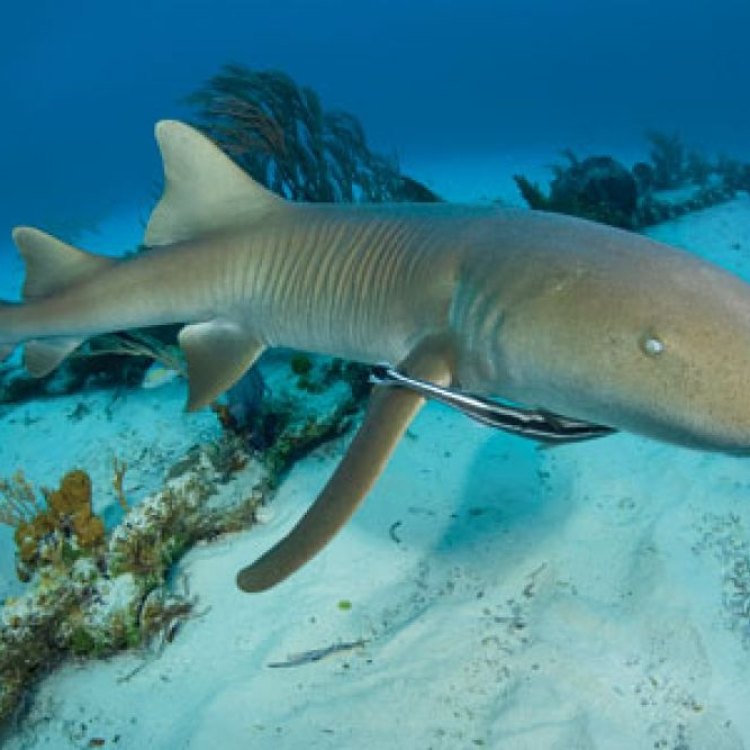
The Fascinating Nurse Shark: A Gentle Giant of the Ocean
Disclaimer: The content provided is for informational purposes only. We cannot guarantee the accuracy of the information on this page 100%. All information provided here may change without prior notice.

